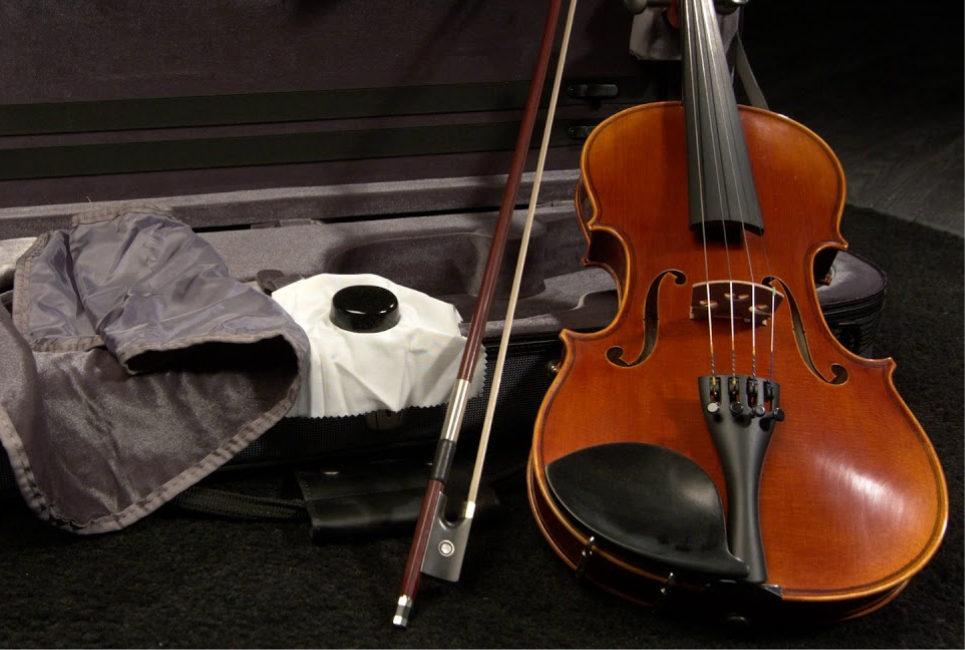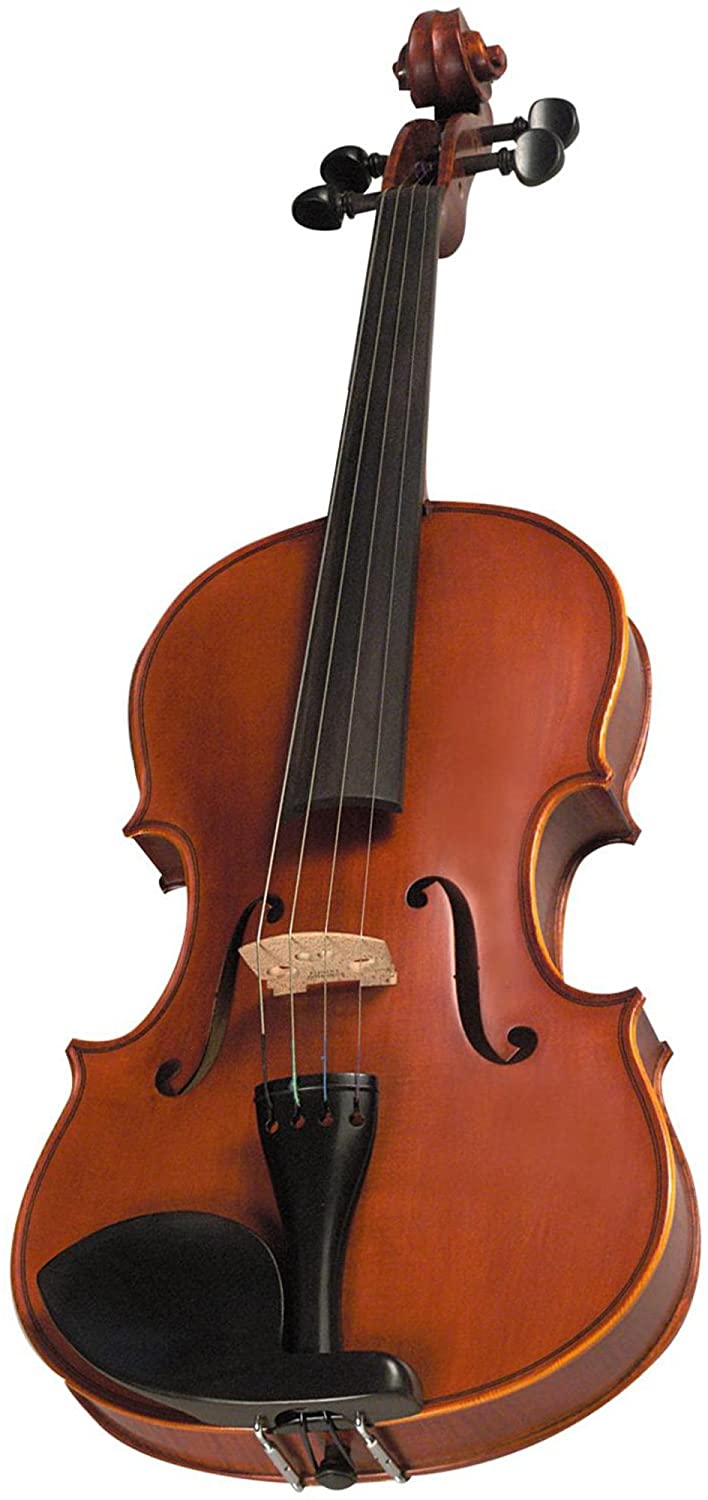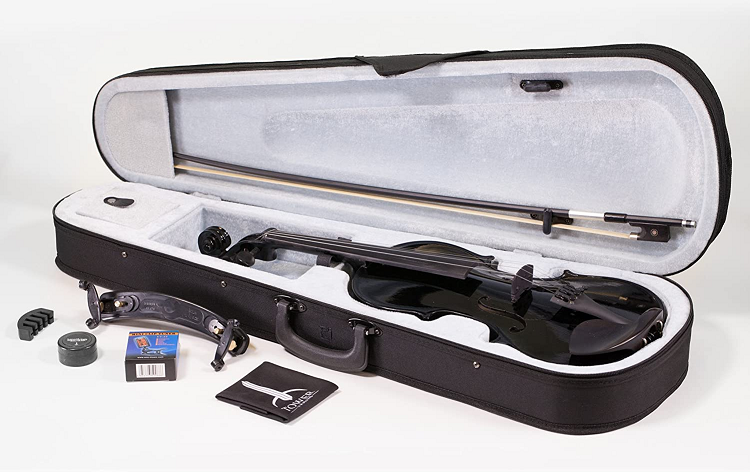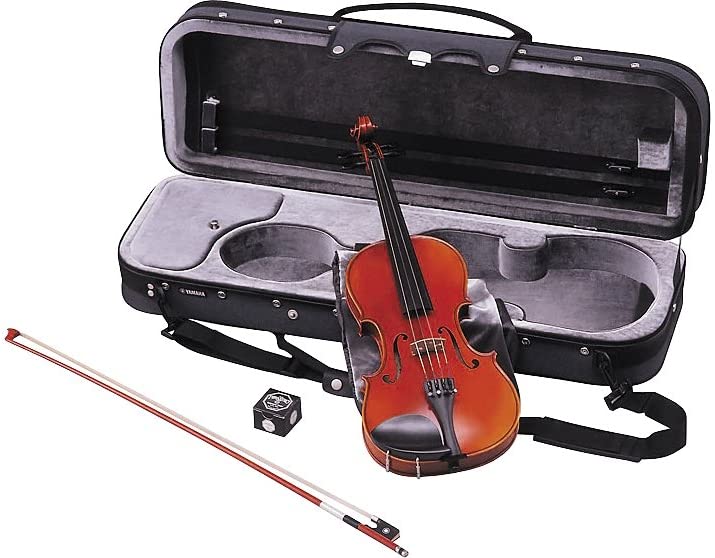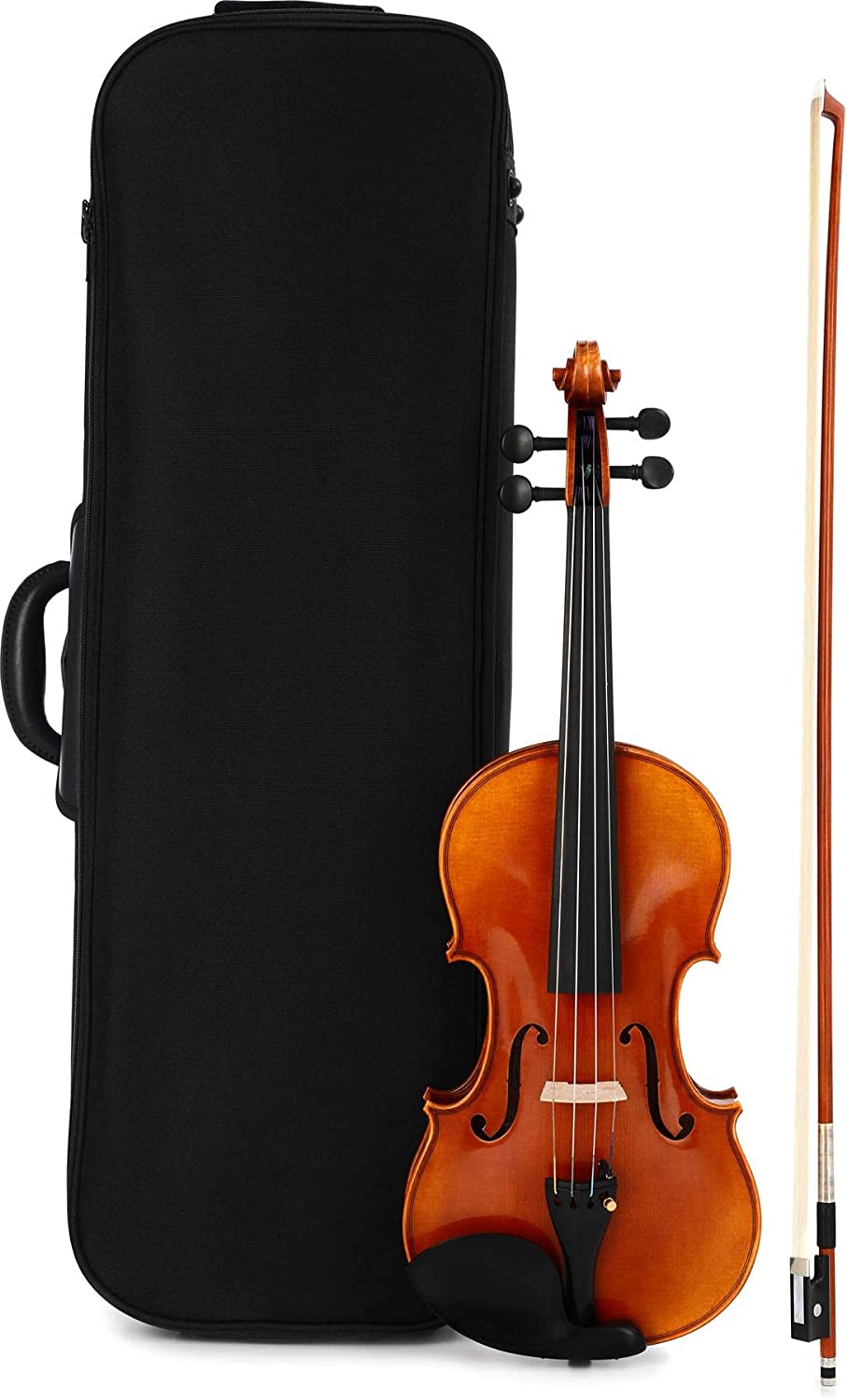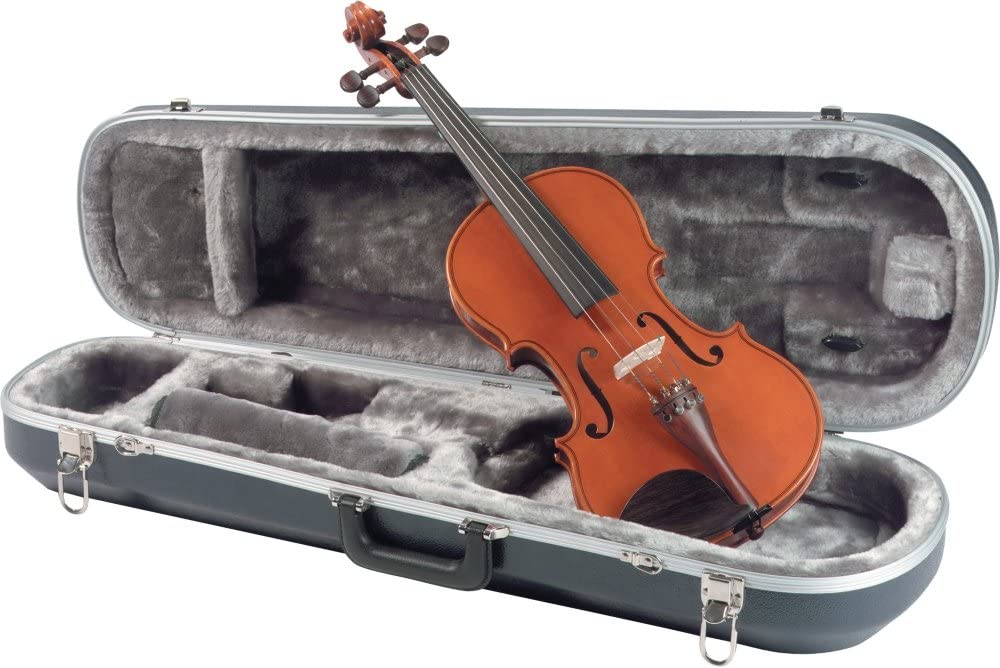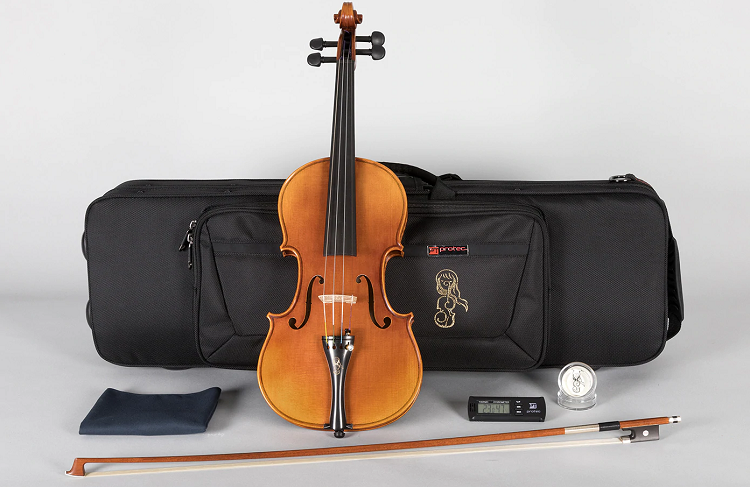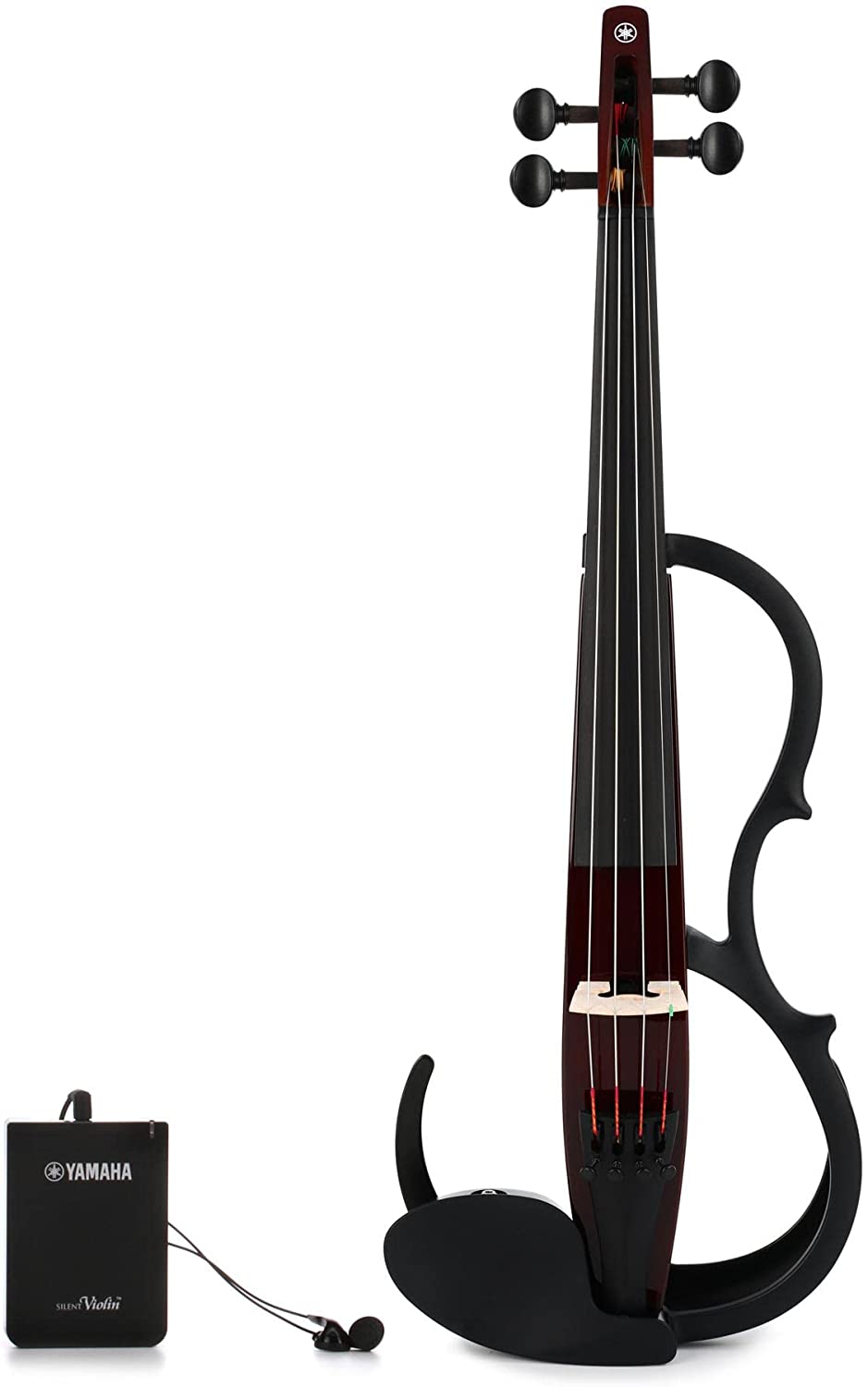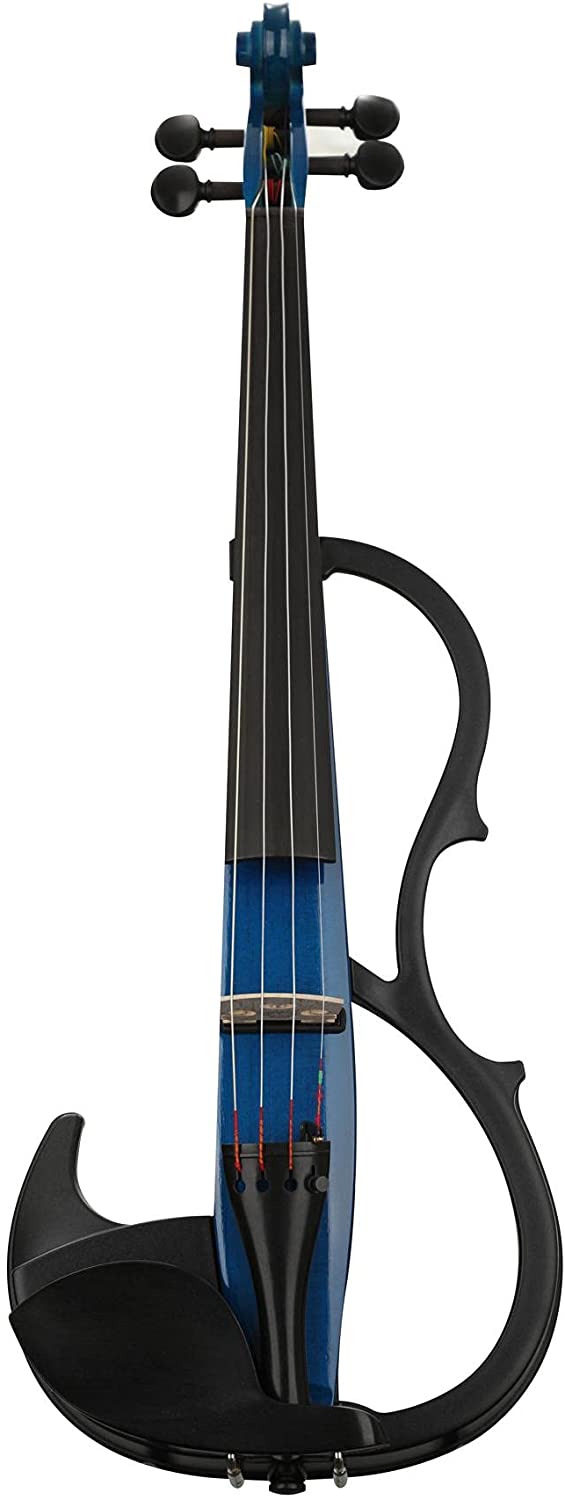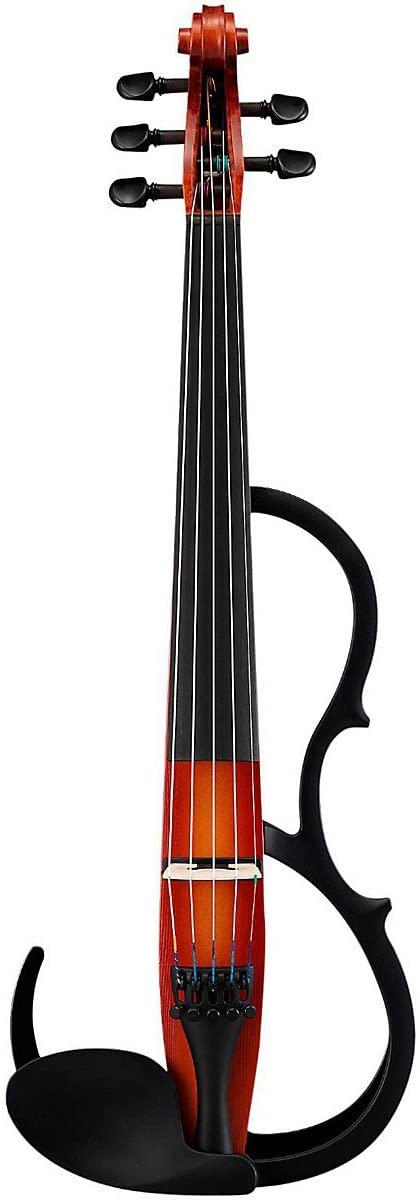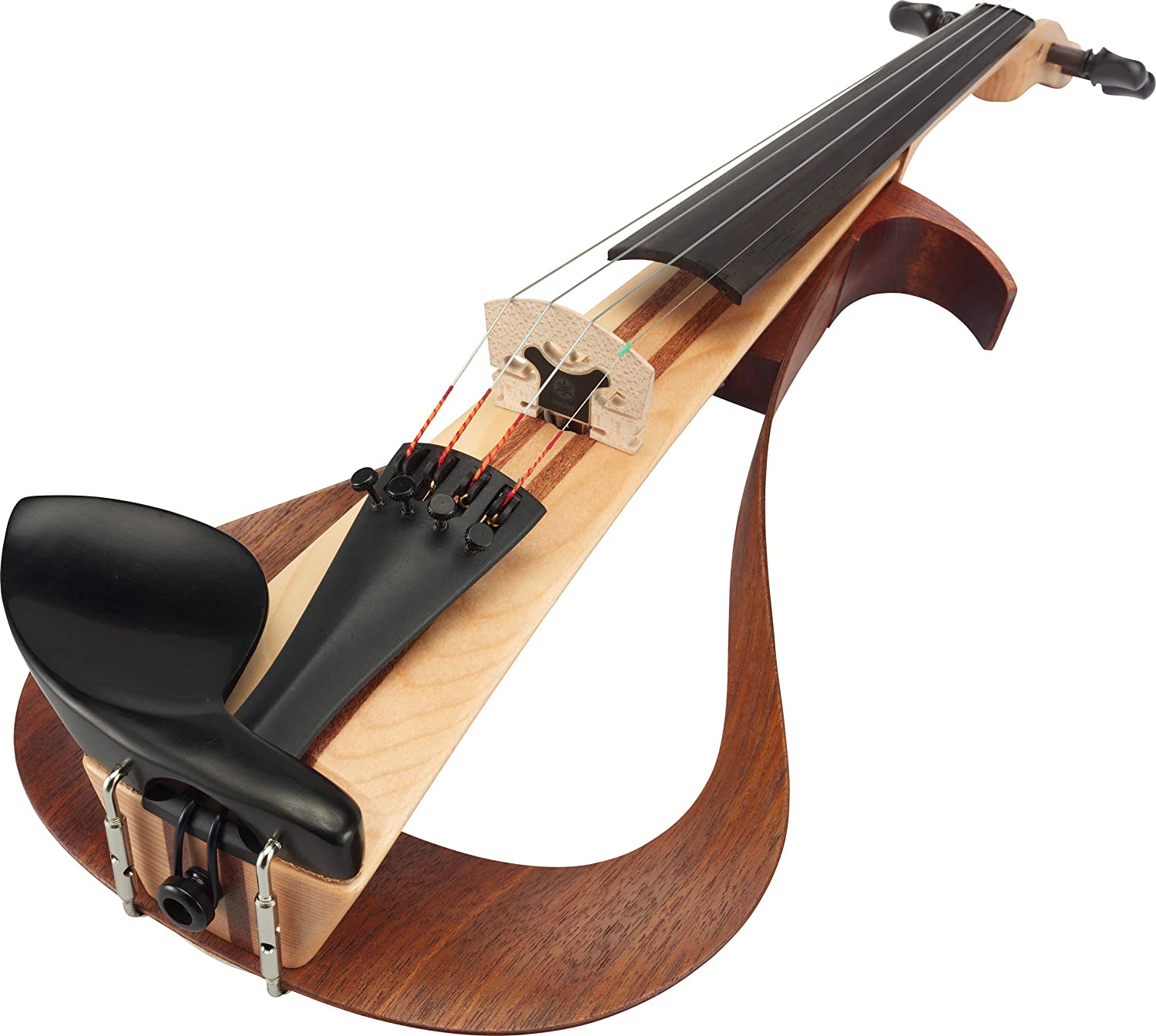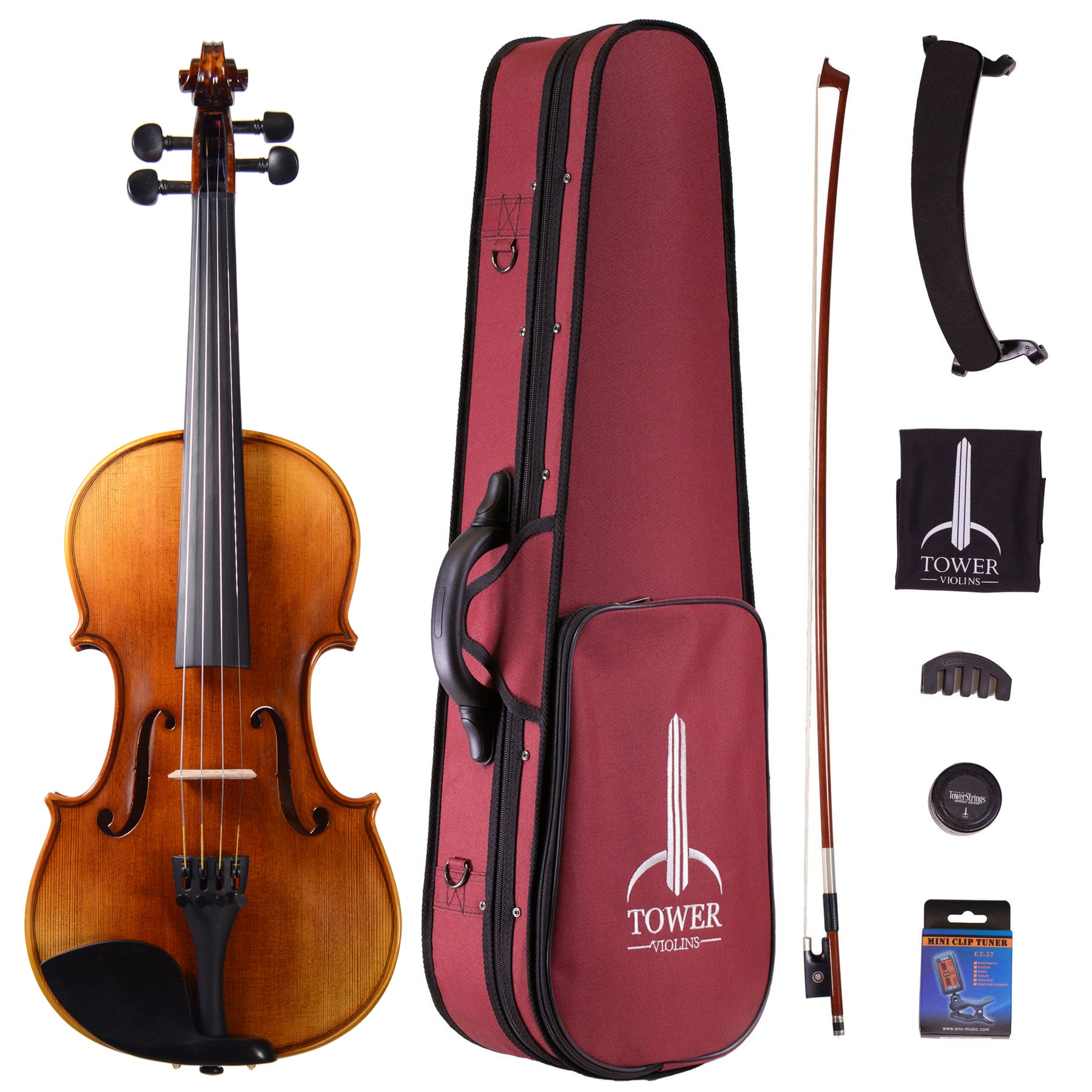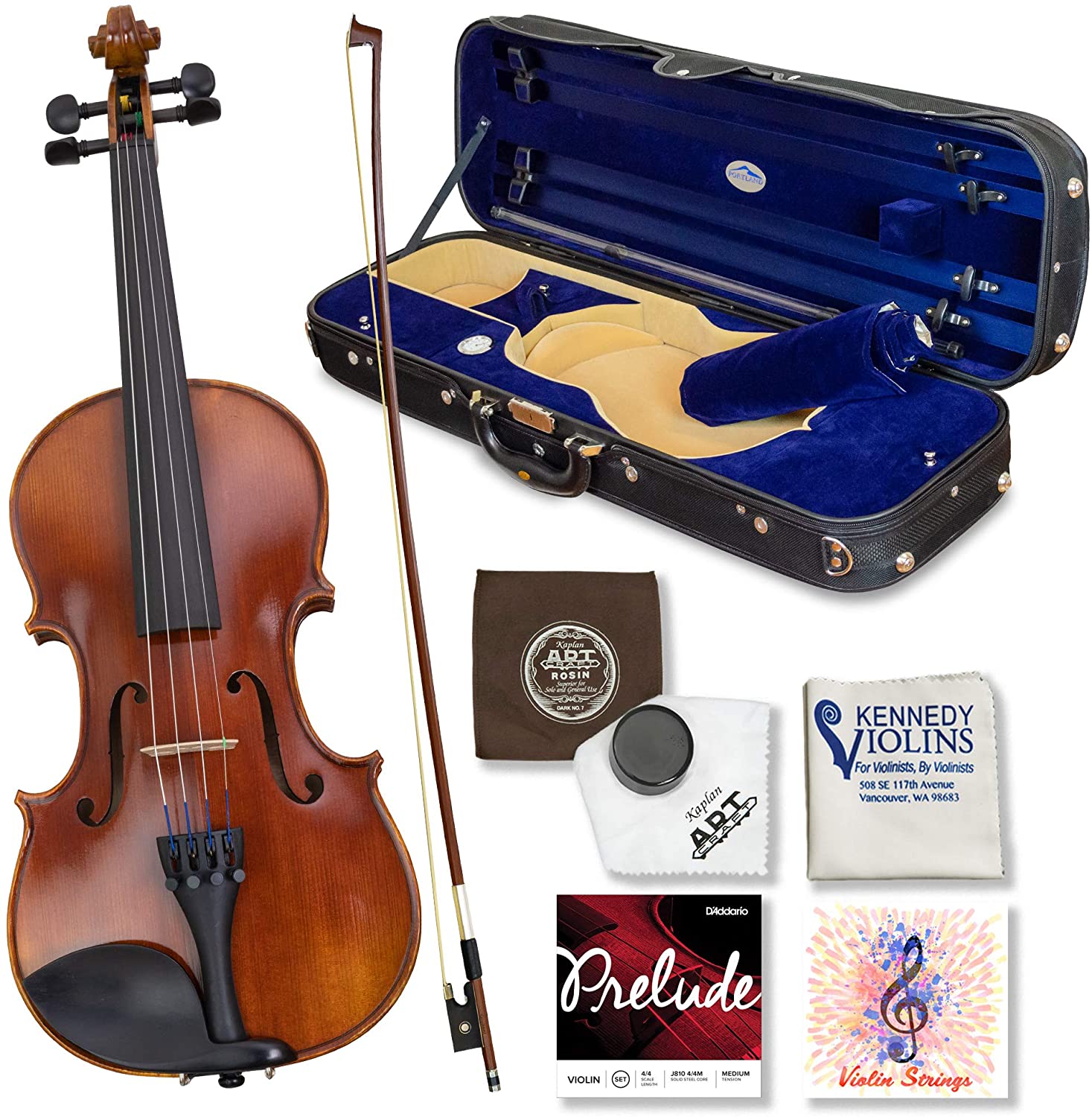- Best Fretted Violins Guide - May 31, 2022
- Best Yamaha Violins Brand Guide - April 13, 2022
- An Honest Mendini MV300 Review - March 31, 2022
As a musician, when I think of Yamaha, I tend to think of their pianos, followed by motorcycles. Their violins were never the first things to come to my mind until I found the world of electric violins. This is where Yamaha shines; their electric violins are some of the best on the market. But that’s not all they have to offer.
Yamaha has a surprisingly wide range of both acoustic and electric violins. Their musical instruments are loved and promoted by many famous musicians.
Still, the face of their violin line is none other than my favorite contemporary violinist Lindsey Stirling, who brings some surprises of her own. Stick around to learn all about Yamaha violins, the models they offer, and a recent special edition!
Bottom Line Up Front
Yamaha is a household brand; not much needs to be discussed to understand who they are. They make a variety of instruments and are most well known for their pianos, clarinets, and other band instruments. But, they have several high-quality violin models available as well.
Their acoustic models are expensive for the quality, but their silent electric models are of top quality. However, I’m not a fan of their passive electric model, but that isn’t because it’s poor quality it’s just my personal preference.
Recently they unveiled a special edition violin in collaboration with famous contemporary violinist Lindsey Stirling. Out of every acoustic violin in their lineup, this is my favorite due to its quality and the special touches they added for Lindsey fans like me.
Overall, Yamaha makes quality instruments, and I’d trust them to deliver high-quality and great-sounding violin any day.
Top Picks at A Glance
Acoustic
- AVSG7 – A solid beginner student option with high-quality tonewoods and a basic outfit.
- AV10SG – A beginner to step up violin with high-quality tonewoods and a professional setup that pays special attention to the strings used.
- AV5SC/SKU with Fiberglass Bow – A beginner student violin that works well for both classroom/rental settings for a new student.
- Lindsey Stirling Crystallize Violin Outfit – A collaborative violin outfit that delivers high quality with special touches for any Lindsey fan.
Electric
- YSV104 – A great high-end entry-level electric violin.
- SV200 – An electric violin perfect for studio recording.
- SV250/255 – Top-of-the-line silent electric violin with all bells and whistles to produce the best sound.
Passive
- YEV104/105 – Passive Electric violin model with striking aesthetic and incredible tone.
Buying Guide for Yamaha Violins and Beyond
Buying a violin is a substantial monetary commitment, so what should you look for when searching for one. That depends; paying attention to the materials, brand reputation, and reviews is critical if you buy online.
But if you are buying a violin in-store, the most important thing to pay attention to is how the violin you are playing feels and sounds to you.
It’s much easier for me to give you pointers for buying online than in-store because in-store is a much more individual experience. So keep in mind that these tips mainly apply to buying online.
Acoustic Violins
Buying an acoustic violin online is the most complicated. Still, you can learn a lot about a violin by its setup and what it is made from. Most importantly, find a way to hear what it sounds like, whether a youtube video or a friend who has the same model.
There are several things to look out for when searching for an online listing but almost buy from a reputable label if you purchase online. I recommend Kennedy Violins and Fiddlershop for high-quality, affordable violins online.
However, other labels like Yamaha and Eastman strings make more expensive but high-quality violins that you can trust. If a violin is unlabeled or used, I suggest you look at it in person for damage and play it to make sure it’s comfortable.
Here are the main things to look for on a violin listing.
- Tonewoods should be solid carved spruce and maple.
- The fingerboard should preferably be ebony, but I’ve also seen rosewood used on student instruments.
- Student violins need 4 fine tuners, either built-in or removable.
- Ebony and boxwood are the most common fitting material for student violins
- High-quality strings like D’Addario Preludes, Helicores, Dominants, Fiddlershop or Zyex
- Teller or Aubert Bridge made from maple
- Professionally setup, not factory setup
Price
The price can range significantly for a quality acoustic student violin. Anywhere from $250 to thousands, it’s entirely up to the buyer’s discretion, and every violinist will throw out a different number. I wouldn’t pay more than $500 to $600 personally because I know I can get a high-quality violin for this price.
However, Yamaha prices their violins similar to Eastman strings, which means you pay a lot for the brand name. This doesn’t minimize the quality of these instruments because they are high-quality and very well-made instruments.
It just means they are overpriced for what they are. However, I would fork over the money for the Crystallize violin if I had it. Partially due to sentimental feelings and because it’s genuinely a beautiful violin that sounds lovely.
Electric Violins
Buying an electric violin is more down to brand reputation and reviews than material quality. Don’t get me wrong, the type of wood and how it’s carved do affect the violin’s tone.
Still, electric violins have the luxury of having a tone created by electronics that is less nuanced than an acoustic violin. Instead, focus on the electronics and where the violin comes from, along with its setup and the placement of the jacks.
- High-quality pick-up from a reputable brand. Piezo pick-ups that are attached to the bridge are the most popular. Yamaha has their own branded version.
- Composite or ebony fingerboard
- High-quality strings like Preludes, Helicores, Zyex, or Dominants
- 4 Fine Tuners or Geared Pegs, electric violins generally benefit from having fine tuners, and it certainly can’t hurt to put tuning on easy mode
- Well rated reviews and well-known brands like Auro, Viper, Yamaha, Glasser, Bunnel, Fiddlershop, or NS Designs
- Well placed output jacks to allow for easy cord placement
- Shaped to be able to use a standard shoulder rest
- If silent electric, the violin needs to have well-placed headphone jacks that won’t get in the way of the shoulder rest or bow
Price
The price range will again range based on what you want. An essential electric violin can cost as little as $150. Still, personally, I’d aim again for the $500 to $600 range for an excellent electric violin. I paid about $350 for mine, and while it’s a great violin, it’s not the same quality that I would find in a slightly higher-priced electric violin.
I feel as if that extra bump in quality is well worth it for better electronics and overall tone. If I was professionally recording or touring, I wouldn’t hesitate to spend the money on the SV250 or a custom viper build.
With that said, I find the Yamaha electric violins reasonably priced for what they are, their brand reputation, and how they sound. While they are more expensive than what I would personally pay at this point in my musical journey, for professionals are earnest students, I can see why one of these violins is worth the money.
Yamaha Violin Models
Yamaha offers 12 violins; seven of those are acoustic models and the rest of a mix of active and passive electric violins. Yamaha is mainly known for its active electric violins, but I’ve been pleasantly surprised by their acoustic violins.
While Yamaha may not be the most well-known brand for violins, they follow the same high-quality formula that every other product receives. It should be no surprise that Yamaha also hits all of the high notes with their violins. So without further ado, The Yamaha Violin lineup!
Acoustic
Yamaha offers an exciting lineup of Acoustic violins; the ones below are the ones I consider worth buying. Surprisingly this was all but one. With the Bravoli being made of pressed wood and sprayed polyurethane coating, I couldn’t consider it one of the best Yamaha offers.
However, their other options are beautiful instruments, although I’m not sure they are worth the price point that Yamaha markets them at, knowing that there are similar violins for the much cheaper on the market.
AV7SG – Best Beginner Violin
The AV7SG is marketed toward new students, but it definitely has a higher quality feel. Compared to the Bravoli, it’s a huge step up in quality.
The violin is handcrafted using solid carved spruce and maple that has been seasoned and dried for at least 5 years. The hand-applied oil varnish makes sure that his violin has personality both tonally and aesthetically, which is one of the things that draws me.
Between the wood quality and the varnish, I find this violin one of the best in acoustic Yamaha lines. The ebony fingerboard, pegs, and chin rest make sure this violin is durable for students and has a traditional look that blends well among ensembles.
It’s set up perfectly for a new student with a Wittner ultra tailpiece that has 4 solid built-in fine tuners. The Aubert bridge is high quality and seems pretty standard on most of their acoustic violins. I particularly like the Helicore strings, which are a step up from the Preludes usually found on student instruments.
They are still steel core strings that provide a ton of stability for new students, but they are a bit warmer and last a little longer than Preludes or other lower-end strings. However, if you want to use synthetic strings, Fiddlershop offers a set for the same price as Helicores.
Pros
- Aged Spruce and Maple Allows the Violin to Sound More Sophisticated
- Flamed Tonewoods add personality to the Violin’s Aesthetics
- Hand Applied Varnish Adds Personality
- Wittner Tailpiece with 4 Built-In Fine Tuners
- Upgraded Helicore Strings Provide Stability with a Warmer Tone than Preludes
- Large Case with Plenty of Storage
- French Aubert Bridge
- Professional setup
Cons
- Brazilwood Bow, this violin could do with a nice Pernambuco or Carbon Fiber/Fiberglass Bow.
AV10SG – Best Step Up Acoustic Violin
The AV10SG is marketed as a step-up violin, but I find it a pretty solid starter violin. It features solid hand-carved spruce and maple with a hand brushed oil varnish. The fittings are ebony, including the tailpiece, which has a singular fine tuner on the E string.
I’d say the fine tuner on the E string would be what they use to try and set this violin apart from a student model. While it’s true that intermediate students are more likely to use a single fine tuner on the E string, 3 more can be added for new students who need the use of all 4.
The pegs are made from boxwood, but the chinrest is ebony, an exciting mix, but it seems they have dyed the boxwood to match the chinrest. The violin is set up with an Aubert bridge, a pretty basic french style bridge; I use one of my acoustic violin. The strings are a mix of Dominants on the G, D & A strings, with a Helicore string on the E.
I like this combination because I find the dominant E string too tinny for my liking, and the Helicore strings are a little more subtle. The outfit comes with a hard case, upgraded Pernambuco bow, and rosin cake, the basics.
Pros
- Solid carved spruce and maple tonewoods
- Ebony fingerboard
- Wittner Tailpiece with Aubert Bridge
- Upgraded Strings Perfect for an Advancing Student
- Comes with a Pernambuco Bow instead of Brazilwood
- Professional Setup
Cons
- Dyed Boxwood Pegs
- Unaged Wood
- Single Fine Tuner on E String
AV5-SC & SKU – Classroom Friendly Violin
The AV5 SC is marketed as an entry-level student violin. Still, it’s a high-quality violin that would suit any beginner or someone looking to purchase their first violin after renting. It features fully hand-carved solid spruce and maple that have been seasoned and aged for 5+ years.
It features ebony fittings with a Wittner tailpiece with 4 built-in fine tuners. The varnish is oil-based and hand-applied like most other models in the lineup. The setup includes a Yamaha original bridge and Prelude strings.
The outfit includes a small triangle case, but it seems good quality and has decent storage space. A Brazilwood or Fiberglass bow and small rosin cake are also included. Overall this violin definitely seems set up for a new beginner. Still, I could see it taking a student through many of their learning years.
This violin is definitely high quality with string upgrades and a bow upgrade. However, not the best in the lineup; the price point reflects where it sits. I’d definitely recommend this to a new student or someone looking to purchase their first violin.
The SKU is highly similar to the SC, so I included them together. This violin follows the same formula as the SC, down the varnish. Still, instead of a brazilwood bow option, this outfit consists of a fiberglass bow only and a plastic triangle case with a shoulder rest holder.
This outfit feels more suited for a school or a rental setting due to the tougher case material and the fact that they specify that the cases are stackable.
Pros
- Aged and seasoned spruce and maple tonewoods
- Ebony fingerboard and fittings
- 4 Fine Tuners
- Hand Applied Oil Varnish
- Triangle Case with Plenty of Storage
- Included Brazilwood or Fiberglass bow and Rosin Cake
- Setup with D’Addario Prelude Strings
- Professional Setup
Cons
- The SKU is only available in 4/4, 3/4, and 1/2 sizes.
- Yamaha Bridge with little information available
Special Edition Violins – Lindsey Stirling Yamaha Crystallize Violin
Lindsey love’s using the Yamaha electric violins, so together, they teamed up to create an acoustic violin in her vision. Made with tight-grained spruce and flamed maple that has been hand-carved and graduated and an antique oil hand-applied varnish, this violin has the mark of quality.
The fingerboard is made from ebony along with an ebony chinrest and tailpiece. What I like the most about this violin is the 4 Wittner fine tuning pegs, which remove the need for 4 fine tuners but allow you to easily tune each string.
Lastly, it’s strung with Dominant strings, which I know from experience are some of Lindsey’s favorite and some of mine.
There are a few small touches that any Lindsey Stirling fan would love, like the hand-drawn engraved logo on the tailpiece and the crystal on the fine tuner to pay tribute to her first hit single, Crystallize.
The outfit comes with a Lindsey logo deluxe case with a signed dust cloth, hygrometer, thermometer, shoulder rest retainer, and 2 storage compartments.
The rosin is a unique hypoallergenic blend with an excellent design similar to magic rosin. Lastly, they include a Brazilwood, but I really think they could have included a carbon fiber or fiberglass bow.
Pros
- High-quality violin made from solid spruce and maple
- Wittner Geared Pegs and 1 fine tuner on the E string
- Ebony fingerboard and fittings
- Engraved Logo on the tailpiece
- Crystal on the only fine tuner
- Deluxe case with plenty of extras
- Signed dust cloth
- Lindsey Logo Branded Rosin
- Professional Setup
Cons
- Brazilwood bow
Silent Electric Models
Yamaha Silent Electric Models are the violins I’m the most familiar with within this lineup. These are used pretty religiously by Lindsey Stirling in various her shows; she’s even glued crystals onto the entire body of one. Between the two models, I prefer the Silent Lineup, with the option to play with headphones or plug into an amp.
This setup is more versatile for the average musician, especially those that may need to practice in an apartment or during odd hours. Traveling musicians who need to use hotels will also find silent electric models useful for how quiet they are when plugged into headphones while still allowing for a full sound.
Yamaha makes 4 Silent Electric Models total; however, the last one is the same model but with the option for 4 or 5 strings. I’ll explain a bit about that when we get there. I don’t have a favorite in this lineup since each violin is made for a different purpose.
If you need an essential electric violin, I recommend the YSV104 because it’s the cheapest model but offers the most in terms of features to price. If you are a studio musician, I recommend the SV200; the two pick-ups allow for the highest quality tone and clear recording.
If you are a professional or stage musician, the SV250 is the ultimate Silent Electric violin;. At the same time, it does well in the studio. I really feel it’s made for the stage.
YSV104 – Best Entry Level Electric Violin
The YSV104 is the cheapest model in the lineup, but it doesn’t skimp on quality. Like all of these violins, it’s made with a spruce body and plastic frame. This violin has a composite fingerboard instead of ebony, which is fine for an electric violin as it won’t mess with the overall tone.
The piezo pick-up is attached to the bridge’s underside. The SRT pick-up is accessible from the back of the violin with the jack for headphones or an amp accessible from the chin rest, an odd but highly workable placement.
The violin has ebony tuning pegs with a resin tailpiece with fine tuners. It comes set up with D’Addario Zyex strings. Zyex strings are synthetic strings that work really well on electric violins. They tend to settle and stretch quickly and need minimal to no adjustment after a few days.
They are also resistant to climate change, which is great for traveling musicians who often encounter various humidity and temperatures. These violins don’t come in an outfit, but they come with the basic cables and control box needed for the pre-amp.
Pros
- Solid Spruce Body
- Pre-Amp and the ability to plug headphones allow for quiet practice with full sound
- Sturdy Composite Fingerboard
- Plastic Chin Rest and Ebony Pegs
- 4 Fine Tuners
- Piezo Pickup On Bridge
- Stable Zyex Strings
- Comes in 3 colors
- Shaped like an acoustic violin which allows for the use of various shoulder rests
- Studio Response PreAmp Technology for pure sound
- Professional Setup
Cons
- Doesn’t come with a case
SV-200 – Best Studio Violin
This violin is a slightly upgraded silent electric violin meant for the studio and silent practice over anything. The two dual built-in piezo pick-ups on the bridge allow the violin to pick up a wider, more dynamic range. The tone and volume controls allow the player to adjust how they sound on the fly.
The output jack is located on the left-hand side of the violin instead of the behind near the back of the chin rest. This allows you to drape the cord over your back easier and keep it out of the way.
The SV-200 is shaped similarly to an acoustic violin which allows for the use of standard shoulder rests. It has an ebony fingerboard for durability and all ebony fittings, and one fine tuner on the E string. The pre-amp takes 1 9v battery, which is pretty standard for electric violins.
The battery port is located on the back of the violin. Unlike the YSV104 and SV250/255, this violin doesn’t have a control box. Instead, it is completely adjusted via the violin itself, which works great in the studio. However, the control box can be easier to use and access for stage musicians.
Pros
- Ebony Fingerboard and Fittings
- 2 Pick-ups for a warmer, richer, and dynamic tone
- Uses 1 9v battery for power
- Tone and volume adjustments on the violin itself are perfect for quick adjustment
- Jack is located on the left side for easy cord placement
- Available in red, blue, black, and brown
- Great for studio recording and performances
- Professional Setup
Cons
- Only has one fine tuner instead of 4; there is no reason to have only one fine tuner on an electric violin. Don’t play hard mode if you don’t have to.
- Doesn’t come with a case
SV250/SV255 – Best All-Around Violin
The SV250/255 is their top-of-the-line silent electric violin, and the one Lindsey Stirling uses the most. The SV250 is a 4 string violin with the normal GDAE strings, with the 255 being the 5 string version which adds a low C string. This violin is made from both spruce and maple with an ebony fingerboard.
Similar to the SV200, this violin also has dual pick-ups. Still, instead of two piezo pick-ups on the bridge, they use a VNP1 pick-up, which is a Yamaha exclusive system. Then they put the piezo pick-up on the body instead.
Unlike the SV200, which only has one fine tuner, they’ve upgraded this tailpiece to a Wittner Ultra with 4 built-in fine tuners; why they haven’t done this on the other violins is beyond me.
Fine tuners make tuning much quicker, in my opinion. They don’t mess with the overall tone on an electric violin at all, so there is no reason not to include them in all of their models.
You have 3 options, 2 AA batteries, an AC adapter, or a Phantom 28-48V power supply for power. The jacks are located in the same places as the YSV104. This violin has an external control box instead of the controls located on the violin.
Pros
- High-quality dual pick-ups on the bridge and body\
- Solid flamed Spruce and Maple Body
- 3 Power Supply Options
- French Aubert Bridge
- Ebony Fingerboard and fittings
- Wittner Ultra tailpiece with 4 fine tuners
- Zyex Strings
- Uses standard shoulder rest
- Professional Setup
Cons
- Doesn’t come with a case
- Only comes in one color
YEV 104/105 Passive Eletric Violin
Passive electric models require an amp for sound. At the same time, they are great for performances; they can be rather frustrating for those who just want to pick up their violin and go.
Yamaha makes one passive model with both 4 and 5 string options. The YEV is made from Spruce, Mahogany, Maple, and Walnut; suffice to say, it’s an interesting-looking violin. I like the overall aesthetic, but it’s not a violin I would invest in personally.
It has an ebony fingerboard and resin tailpiece with 4 built-in fine tuners. The bridge is maple with a piezo pick-up, and it’s strung with Zyex strings like all of their other electric violins.
The body has volume control and a switch to turn it on. The violin’s shape allows for the use of standard shoulder rests. The passive output jack is located on the back of the violin near the neck, not the most conducive place but not the worst either.
Pros
- Impressive aesthetic features thanks to the multiple types of wood used in construction
- Strong composite fingerboard
- 4 built-in fine tuners on the tailpiece
- Use of standard violin shoulder rests, and chin rests
- Lightweight and easy to hold
- Same piezo pick-up as the SV250
- Stable Zyex strings which work well on electric violins
- Professional Setup
Cons
- Output control is located in an awkward spot on the back of the violin’s neck
- Doesn’t come with a case
Yamaha Alternatives
While Yamaha makes some great violins, I can’t deny they are on the pricey side, and I know you can get cheaper violins but still just as high quality.
Although I will admit their electric violins are some of the best in terms of quality and I couldn’t find a viable alternative that I would consider. I can, however, find several alternative acoustic models that are significantly cheaper.
Tower Strings Legend Violin Outfit by Fiddlershop
The Tower Strings Legend by Fiddlershop is one of the closest violins in terms of quality, tone, and price to many acoustic Yamaha models.
In fact, its specs are very similar to the Yamaha models, and tone-wise it’s just as sweet if not sweeter than any of the Yamaha models. In fact, I like this violin more than any of the Yamaha models, save for the Crystallize violin.
It features hand carves spruce and flamed maple tonewoods that have been aged for at least four years. The fittings and fingerboard are ebony, and the tailpiece is Wittner style with 4 built-in fine tuners. It comes fully set up in their workshop in Florida with a hand-carved bridge and Prelude strings.
The outfit comes with a small but sturdy triangle violin case, brazilwood bow, rosin, shoulder rest, practice mute, and tuner. You get a lot more with this violin for $350 than for over a thousand with the lowest-end Yamaha violin.
Louis Carpini G2 Violin by Kennedy Violin
The Louis Carpini G2 is a step-up violin by Kennedy. Still, for the price and quality, it could easily be a beginner violin. Kennedy Violins is essentially the Fiddlershop of the west coast, and they sell high-quality violins at affordable prices.
Its made from solid carved spruce and maple tonewoods with hand-applied oil varnish. It has an ebony fingerboard and fittings with a Wittner-style tailpiece with four built-in fine tuners.
Like the Tower Strings Legend, this violin is professionally set up with Prelude strings in-house in their workshop in Washington. It comes fully loaded with accessories, but I love the case they include with all of their violins. Its high quality and spacious, with multiple storage pockets and a hydrometer.
The outfit comes with a brazilwood bow, extra strings, and rosin. For a little over $600, you get a similarly high-quality violin for less than any Yamaha violins.
FAQs
Answer: It varies significantly, but their cheapest violin is around $700 for the YEV Electric violin. Their cheapest acoustic model, the Bravoli, is around $925. However, this violin is definitely not worth this price tag, and I didn’t include it on this list either. The AV5-SKU is the next cheapest coming in at about $1,100.
Answer: The Yamaha silent violin is an electric violin with a piezo pick-up and a pre-amp. The pre-amp is powered via a battery or adapter, which allows you to play the violin without an amp and still get a full electric sound. It also allows you to plug a pair of headphones into the output or headphone jack and listen to yourself play.
This mutes the overall sound of the violin externally but allows you to hear the full sound in your headphones. It’s perfect for when you are in a space where you need to practice but do so as quietly as possible.
A passive electric violin requires that you have an amp to get the full sound from it; it only has a piezo pick-up and no pre-amp. You can play it without an amp, but it won’t sound very good, and it will be difficult to truly enjoy the sound.
Answer: This depends on what you consider good. The acoustic models listed here are capable violins made with high-quality materials. They sound pleasant and are built to last a student several years. However, I find them overpriced.
Most of the price is really paying for the brand name Yamaha and not the quality of the instrument; you can find similar or higher quality violins for cheaper quite easily. In that regard, no, the acoustic violins are far from worth it, but they are good violins nonetheless.
The electric violins are some of the best on the market. I would never hesitate to pay the money for a silent one. Still, the passive violin is very high quality for those looking for that type of violin.
Final Thoughts
Violins can be a major investment, and Yamaha certainly asks a lot in that department if you want to get your hands on one of theirs. The acoustic violins are far from worth it with similar quality and tone available for significantly less, but these are still high-quality violins with excellent tone.
Their special Crystallize violin, while expensive, is worth it for those who are looking for a long-term musical companion, and those who are fans of Lindsey Stirling will find the most value in this package, though.
Their electric violins are top of the line. The 250 is their best violin; it’s definitely one I would purchase in a heartbeat. Their other contenders are just as worthy at cheaper price points. You really can’t go wrong with one of these violins.
Looking for more interesting readings? Check out:

